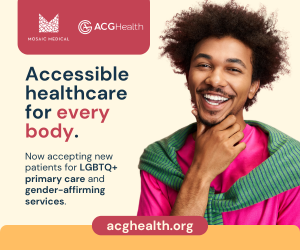There are those who believe that transgender and nonbinary people only become trans or enby after they are exposed to the notion or after they are “indoctrinated” into the transgender community. This belief that trans and nonbinary identities are rapidly realized helps fuel cultural views of transgender and nonbinary people and influence those fighting against our rights.
The theory that trans people decide on their trans identity quickly and after exposure to the idea makes as much sense as the idea that gay and lesbian people “recruit children” — a notion that was popular way back in the days of Anita Bryant and California State Senator John Briggs. While not as popular, this idea can still be heard in 2020 in some of the more virulent anti-LGBTQ circles.
For most nonbinary and transgender people — myself very much included — we can spend years, even decades, trying to puzzle things out. In many cases, we may try doing all we can to fight against our trans nature, trying to create a cultural identity we can either feel comfortable in or one that we may feel will “cure” us of trans feelings.
In many ways, we live our lives in a “stealth” fashion for much of our early life, trying not to get discovered and burying our feelings deep, deep inside. Hence when we do come out, this change may seem immediate to those around us, who never expected we might be uncomfortable with the gender we were assigned at birth.
Also, trans people deal with expectations that others imprint on us, such as a parent who wants their baby boy to grow up to be a football player, or their young daughter to be a pillar of modern femininity.
Now, this isn’t the same for all. Some younger transgender and nonbinary people do come out when they are younger, especially in recent years. Some may have never hidden it all that well, and their coming out is, at best, the reveal of a very poorly kept secret. Our community is full of variation.
For myself, I had my first inklings that I was trans when I was around 3 years old. I didn’t have all the words for this then, of course. All I knew was that I could not understand why I wasn’t the same as other girls and why I was expected to dress differently. It was made clear to me that I was seen as a boy, no matter how I may have felt all those years ago.
By 8 years old, I had learned of the existence of transgender people, first from a radio call-in show I overheard on the scratchy AM radio in one of my parent’s cars, then later perusing some of my father’s forbidden stash of adult magazines.
This was in the era before a worldwide web, so the only search engine I had access to was a musty collection of index cards in the files at my local library. They had next to nothing, only offering up the odd reference to abnormal psychology or some such. Hardly a welcome read.
It was only in my college years that I was able to finally find some worthwhile texts on the subject, then eventually a local support group. I began the path toward coming out and understanding myself.
Yet I am sure that, to those on the outside, this change may have seemed quite rapid, as an otherwise typical young man, albeit a bit on the sullen side, would radically change over the course of just a couple of years. But this doesn’t acknowledge the decades prior I lived knowing that I wasn’t that young man — and, quite frankly, feeling that there was no hope I could ever be seen as anything but that.
I want to make something clear. When we do transition, this isn’t some pastiche we are overlaying upon ourselves. It is the authentic person we are trying to present. The person who may have tried very hard to fit within a gender they were assigned based on a cursory look at their genitals is not who we actually are. The brain takes precedence in this.
Today, thankfully, some things are different. The internet opened up the possibility of near-instant information and community. Mass media has, to an extent, embraced trans and nonbinary performers and celebrities. Even with as hard as things are for the community as a whole in the last few years, those seeking to discover themselves have a far, far easier time of finding other enby and trans people in their community and around the world.
But while things are easier, the basics remain. It can still take us some time to understand who we are. We may still feel the need to conceal our feelings to survive a household that would be hostile to the truth, if only for our basic survival. Further, even with the options out there, finding them can still prove hard if one doesn’t have access to the internet at home.
So please understand, when you hear tales of someone having been a “normal boy” or “typical girl,” then suddenly deciding to change their gender, that is a view from someone on the outside, someone who doesn’t know what we as nonbinary and transgender people experience.
Even when it is well-meaning, it lacks clarity as to who we are. Of course, much of the time, it isn’t well-meaning, but a bludgeon used to harm trans and enby people.
Now, you can help us set the record straight.
Gwen Smith thanks those who helped her down this path. You can find her at www.gwensmith.com

